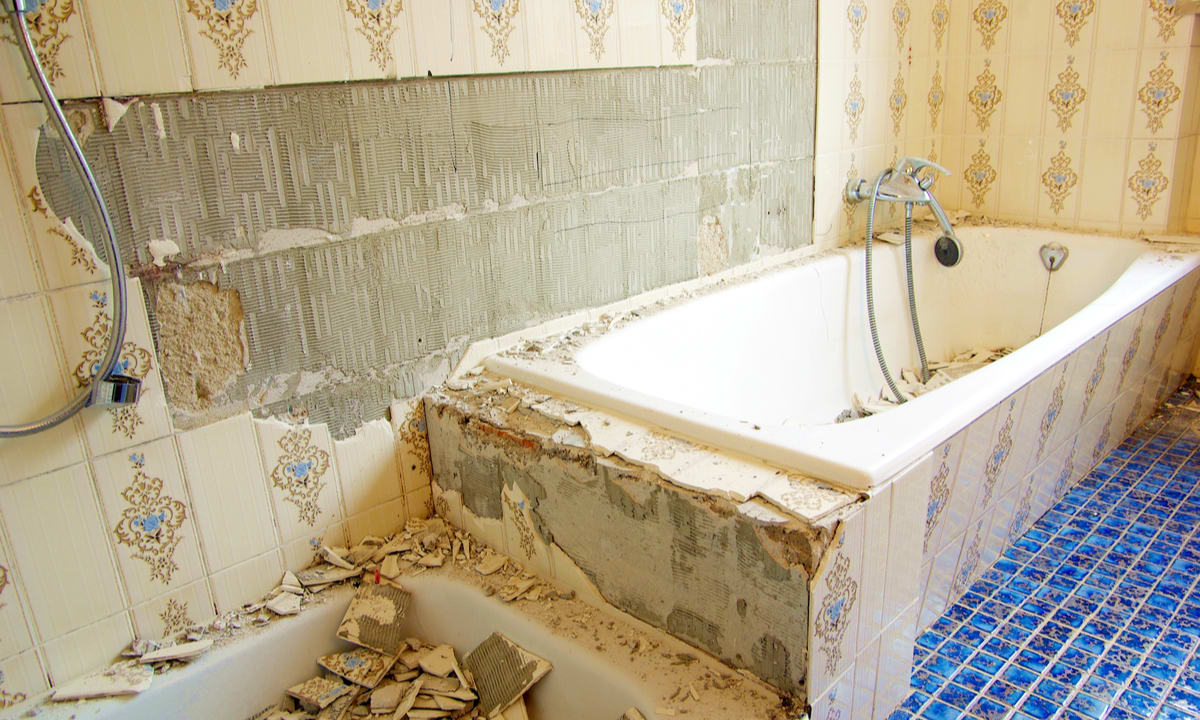Renovate Your Bathroom — Stress-Free & Stylish
This year, bathrooms are being reimagined with innovative designs that perfectly blend functionality and style. From natural materials to bold metallic finishes, every detail is crafted to create a unique, personalized space. In today’s fast-paced, high-stress lifestyle, your bathroom can be more than just functional — it can be a restorative and calming retreat right in your own home.

What is the typical cost of a bathroom remodel?
Understanding the cost of a bathroom remodel is crucial for effective planning. The price can vary widely depending on the scope of work, materials chosen, and labor costs in your area. On average, a mid-range bathroom remodel in the United States can cost between $10,000 to $30,000. High-end renovations can easily exceed $50,000 or more.
Factors that influence the cost include:
-
Size of the bathroom
-
Quality of materials (fixtures, tiles, countertops)
-
Structural changes (moving plumbing or electrical)
-
Labor costs in your region
-
Custom features or luxury additions
To help you budget effectively, consider allocating your funds as follows:
-
20-30% for labor costs
-
15-25% for fixtures and fittings
-
10-20% for cabinetry and hardware
-
10-15% for countertops
-
5-10% for flooring
-
Remainder for miscellaneous expenses and contingencies
What are common bathroom remodel mistakes to avoid?
Steering clear of common pitfalls can save you time, money, and frustration during your bathroom renovation. Here are some mistakes to avoid:
-
Poor planning: Failing to create a detailed plan before starting can lead to costly changes and delays.
-
Ignoring ventilation: Proper ventilation is crucial to prevent mold and mildew growth in your newly remodeled bathroom.
-
Choosing the wrong materials: Selecting materials that aren’t suitable for bathroom conditions can result in premature wear and tear.
-
Overlooking storage: Insufficient storage can quickly lead to a cluttered and disorganized space.
-
Improper lighting: Inadequate or poorly placed lighting can affect the functionality and ambiance of your bathroom.
-
DIY plumbing or electrical work: Unless you’re a licensed professional, attempting complex plumbing or electrical work can be dangerous and costly.
-
Neglecting the budget: Failing to account for unexpected expenses can derail your project.
What are some smart bathroom layout tips?
Optimizing your bathroom layout can maximize space and improve functionality. Consider these smart layout tips:
-
Traffic flow: Ensure there’s enough space to move comfortably around fixtures and open doors without obstruction.
-
Toilet placement: Position the toilet away from the main sight line and consider adding a privacy wall or half-wall.
-
Shower accessibility: For walk-in showers, place the showerhead on the opposite wall from the entrance to minimize water splashing.
-
Vanity sizing: Choose a vanity that’s proportional to your bathroom size and provides adequate counter space.
-
Storage solutions: Incorporate built-in niches, medicine cabinets, or floating shelves to maximize storage without sacrificing floor space.
-
Natural light: If possible, position mirrors to reflect natural light from windows, making the space feel larger and brighter.
-
Wet zones: Group the shower, bathtub, and sink together to simplify plumbing and create distinct wet and dry areas.
What are the latest bathroom design trends in the US?
Staying updated on current design trends can help you create a modern, stylish bathroom. Here are some popular trends in the United States:
-
Spa-like retreats: Creating a calming, spa-inspired atmosphere with neutral colors, natural materials, and luxurious fixtures.
-
Smart technology: Incorporating digital shower controls, smart mirrors, and high-tech toilets for enhanced convenience and efficiency.
-
Statement tiles: Using bold, patterned, or textured tiles as focal points on floors or accent walls.
-
Freestanding tubs: Installing elegant freestanding bathtubs as sculptural centerpieces in larger bathrooms.
-
Floating vanities: Opting for wall-mounted vanities to create a sense of spaciousness and easy floor cleaning.
-
Mixed metals: Combining different metal finishes like brushed gold, matte black, and chrome for a curated look.
-
Biophilic design: Bringing nature indoors with plants, natural materials, and organic shapes to promote wellbeing.
| Provider | Services Offered | Key Features/Benefits |
|---|---|---|
| Home Depot | Full bathroom remodeling, design services, installation | Wide selection of products, in-house design team, financing options |
| Lowe’s | Bathroom renovation, custom design, professional installation | Free design consultations, project management, warranty on labor |
| Bath Fitter | One-day bath and shower remodeling | Custom-fit solutions, lifetime warranty, quick installation |
| Re-Bath | Complete bathroom remodeling, tub-to-shower conversions | Proprietary DuraBath materials, design consultations, efficient process |
| Kohler LuxStone | Shower systems, bath walls, accessories | High-quality materials, customizable designs, professional installation |
When planning your bathroom remodel, consider consulting with multiple providers to compare services, prices, and timelines. Each company offers unique benefits, so choose the one that best aligns with your vision, budget, and project scope.
In conclusion, a successful bathroom renovation requires careful planning, attention to detail, and a balance between functionality and style. By understanding costs, avoiding common mistakes, implementing smart layout strategies, and incorporating current design trends, you can create a beautiful and efficient bathroom that meets your needs and enhances your home’s value.




